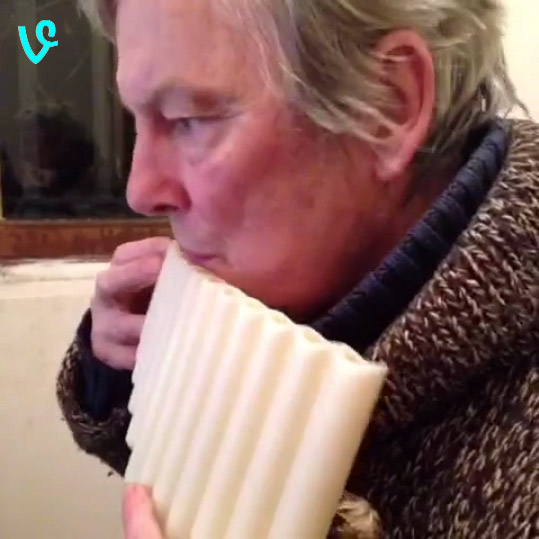Once upon a time, inspired by Alain Daniélou’s Ragas of North Indian Classical Music, I mapped just-tuned frequencies into an infinite web that I call the Honeycomb.
You can explore it in my interactive Atlas of Tonespace, by clicking on the notes to see the fractional relationships between them. Any note can sit at the centre of the diagram below and be surrounded its fractional kinsfolk in identical fashion:
Daniélou’s book attempts to chart the emotional nuances of the individual śrutis (microtonal variants) of Indian music. Students of Indian music learn these microtones subjectively, by summoning up the emotion itself. I mapped Daniélou’s fractions to the Honeycomb, revealing five complete chromatic sets offset from one another by śrutis. I have color-coded them into emotional “families”, ranging from red for frantic to blue for mournful. The slanting white line shows where Equal Temperament falls in the scheme.
Explorers like Charles Lucy have created recordings of some classical pieces performed with Just Tuning. Accustomed as I am to Equal Temperament, I find they sound, frankly, odd. So I didn’t imagine our standardized intervals would carry emotional charge in the same way as those in Indian music.
While hunting for examples of intervals to help students learn to recognize them, I was struck by the subjective difference between these two instances of the +10 move (rising minor seventh):
I have transposed them both so that the interval starts on C. The innocent hopeful yearning of the +10 in the first song is as distant as you can get from the pent-up sexual frustration of the same move in the second. (If you don’t know Axel Bauer’s song Cargo de Nuit you can find the excellent video on youTube.) In one of my previous posts (What’s in that Sandwich?) I remarked on the subjective difference between two +8 moves, where one was a minor sixth, and the other an augmented fifth. But here both intervals have the same classical ID of minor seventh. They do however sit in different relations to their respective tonics, as you can see here:
Another line of enquiry would be to ask what’s in the sandwich, that is, how are the intervals filled? Going back to the Honeycomb again, we can see that these inside notes point us in two different directions starting from C, to two different B-flats.
The first lies two steps due south of C, at 6 o’clock, passing through the tonic F. This choice is confirmed by the grouping of the inside notes F, A and D in its proximity. Its frequency is 16/9ths × fC. The other B-flat (“Bb+“) can be found by seeing where the inside notes A-flat, E-flat and G are grouped above and to the left of C. Looking towards 11 o’clock in the fraction circle above we see that Bb+ has a slightly higher frequency relation of 9/20ths × fC – or 9/5ths if we correct for octaves. The two B-flats are separated by a syntonic comma (81/80). Interestingly, if we look back at the śruti mapping, we see that the lower B-flat is in the white, or “happy” zone, while Bb+ is in the yellow, or “excited” zone.
Indian musical theory seeks to define the emotional charge of microtonally adjusted musical intervals relative to a fixed tonic. But if we adapt our analytical tools, it can also throw unexpected light on subjective emotional differences even in harmonized music based on Equal Temperament. This in turn could possibly even help composers and singers of those songs to nail the emotions they contain.
Still curious? Find out more in my Atlas of Tonespace.
Follow me on Twitter @jazzpanflute













Pingback: Honeycomium. WTF. A truly analog experience. | Intervallic Awareness for Improvisers